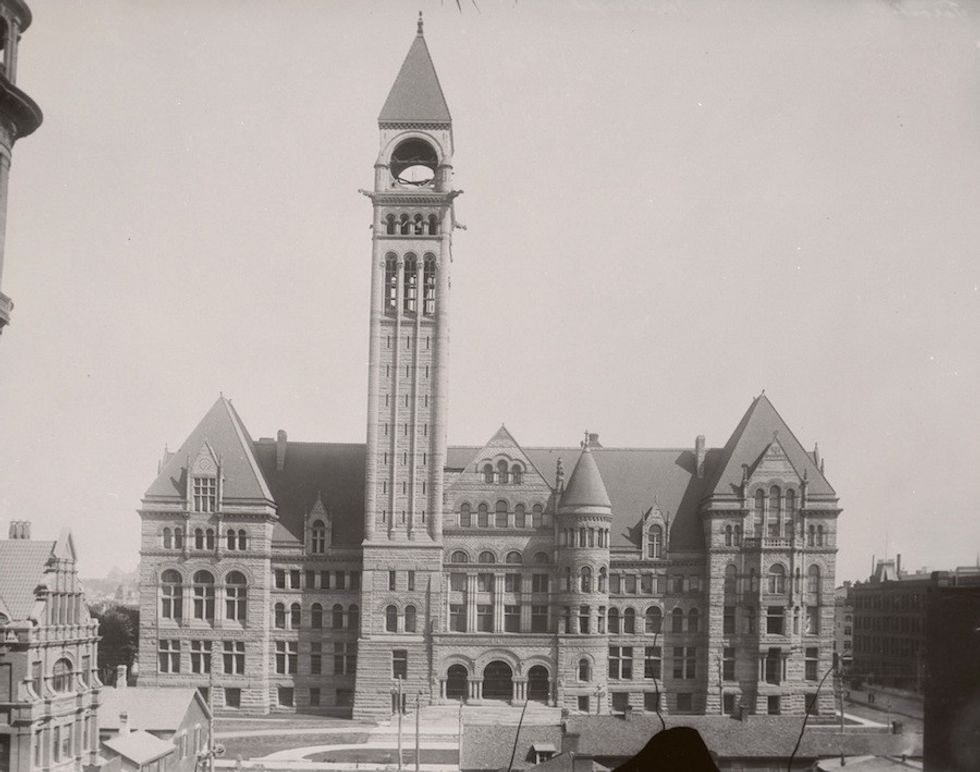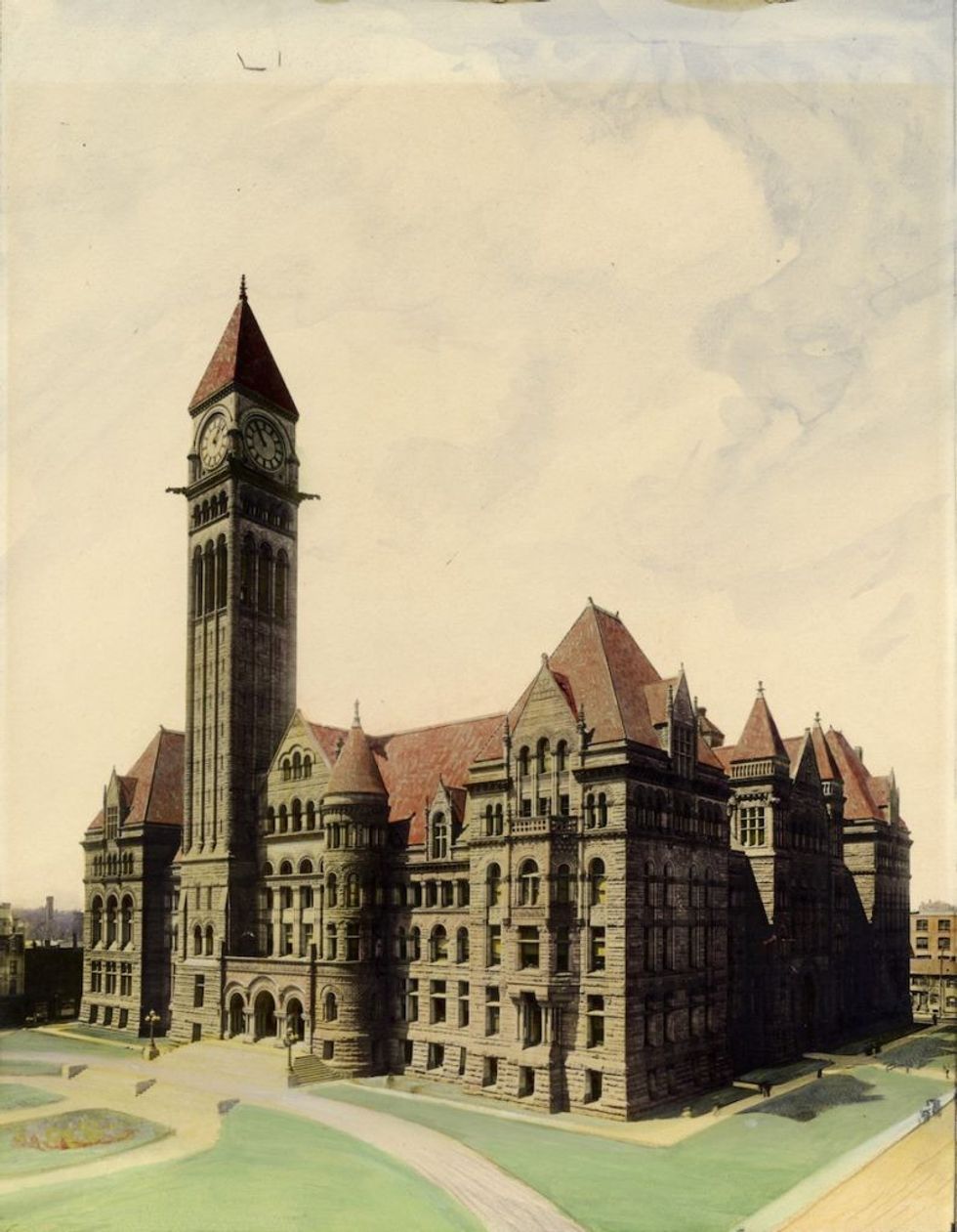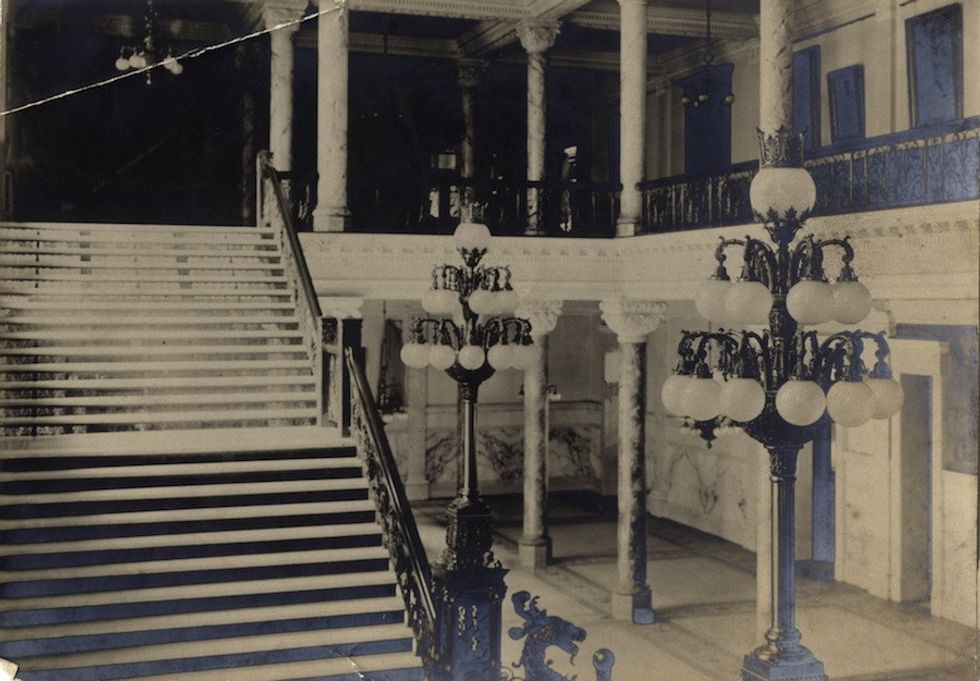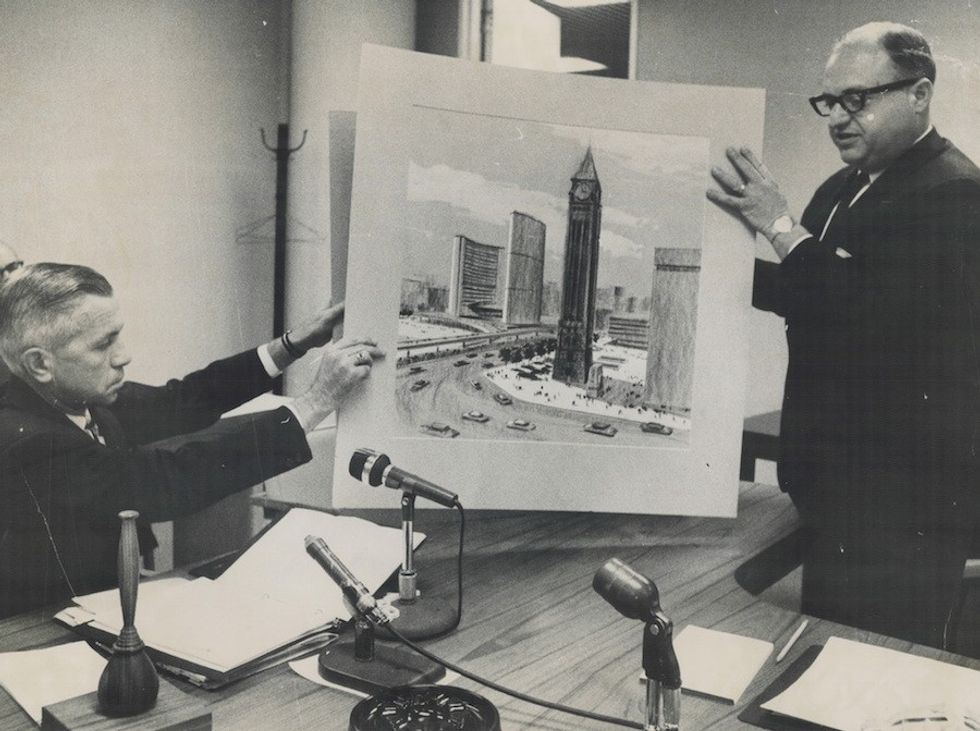
At one time Old City Hall was the powerful political symbol of Toronto. Today, the early-19th-century building still looms over Bay Street, dominating the newer surrounding structures of glass and steel.
Back in the 1960s, its future seemed uncertain as it is once again. Nonetheless, Old City Hall has served our city well.
Toronto's population in 1800 (then the Town of York) was about 500. By 1900 it was closing in on a quarter million.
At the time, we needed to show the world we were no longer a backwater colonial outpost; rather, we were a colossal economic engine that could fuel the British Empire.

Toronto's City Council, at the end of the 19th century, was jammed into a cramped City Hall at Front and Jarvis. So, in 1889 they decided to build a more imposing City Hall. They wanted a structure that would leave the industries of architecture and politics gasping at its grandeur.
It would take architect Edward James Lennox 10 years to complete his magnum opus. It officially opened in September 1899 — the largest city hall in North America.
Its clock tower made it the tallest structure in Canada back then. It stood 300 feet above Queen Street and made for a striking vista when viewed from the bottom of Bay Street.

The lobby is dominated by a massive stained-glass window by Robert McCausland. (His other masterpiece is the intricately stained-glass dome at the former Bank of Montreal, now the Hockey Hall of Fame.)
As stunning as it was with its detailed-stone carvings, massive arches, sweeping staircases and grand gargoyles, by the 1950s it was simply outdated. Old City Hall had to go. Plans were put in the works for a more modern building.
Then came the plans for the massive Eaton Centre. This meant 20 acres of prime downtown real estate would be demolished —including Old City Hall. But it was decided the clock tower would be saved.

Luckily, public objection to this idea forced developers to abandon its plans to wipe Old City Hall off the map. Instead, the Eaton Centre was constructed around the former civic building. It was then, the aged structure would become a municipal courthouse.
In 2016, after plans for a new courthouse were announced, the City of Toronto recommended leasing parts of the Old City Hall to effectively make it a shopping mall.
Fortunately, in February 2018 City Council voted 35 to three to eventually turn the aging structure into a Toronto history museum — after the construction of a new courthouse in 2021.

Still, nothing is written in stone. City staff will report back to council next year with a more refined cost-rundown, before a final vote on this iconic building's future is unveiled.
Toronto, for all its glitz, glamour and gleaming new high-rise condo downtown living has no dedicated museum.
Our past, both glorious and shameful, includes some 150,000 items that have been hiding away in vast warehouses. To view them would be like a scene out of Citizen Kane.
Toronto is a great city, on par with the other great cities of the world; however, we need a museum to display that history and quit being judged by how many skyscrapers we have.


















